Related Tags
Beats president Luke Wood’s life at rock’s cutting edge
The tech mogul talks guitar and gives us the inside track on working with some of the most talented songwriters of the last three decades – from Kurt Cobain to Elliott Smith and Phoebe Bridgers.

All Images: Eleanor Jane
Think of an amazing American alternative-rock record from the 1990s or 2000s; the chances are that Luke Wood was in the room when it was recorded. For several decades, the Rochester, New York native has been at the bleeding edge of the US music industry, whether helping shape the careers of Nirvana, Sonic Youth, Weezer, Elliott Smith, Jimmy Eat World and countless others during his time at Geffen, DreamWorks and Interscope, or heading up Beats Electronics – the headphone and speaker company founded by Dr Dre and Jimmy Iovine that was acquired by Apple for $3 billion in 2014.
Along with his role at Beats, Wood holds a seat on Fender’s board of directors and he also recorded one of Phoebe Bridgers’ first demos. To refer to him simply as influential would be a huge understatement.
High over the achingly hip Los Angeles neighbourhood of Silver Lake, we wind our way up the driveway of Silvertop, the mid-century modern masterpiece that Luke Wood calls home. It was designed by John Lautner – the famed architect who cut his teeth under the tutelage of none other than Frank Lloyd Wright back in the 1930s and went on to create modernist structures including Elrod House in Palm Springs, better known as Willard Whyte’s residence in Diamonds Are Forever. Wood and his wife, writer Sophia Nardin, bought Silvertop in late 2014 and carried out extensive renovations over the following three years.

The setting, with its panoramic views across LA and beyond, is as breathtaking as the daring concrete and glass structure itself, but before we head downstairs to check out Wood’s studio space and gawk at his array of guitars, we wonder what inspired him to pick up the instrument in the first place. “I started playing guitar when I was eight years old,” he remembers, “because I fell in love with Blondie’s One Way Or Another. So my version of that was a Dunlop tennis racquet and a tie, in front of the mirror.”
Before too long, he graduated to a real guitar – an Electra model with humbuckers and active electronics – but Rochester’s northerly location on Lake Ontario meant it wasn’t exactly a regular haunt for touring acts.
A pivotal moment of inspiration came courtesy of Chas Lockwood, guitarist in Invisible Party. One of the local bands Wood fell in love with as a teenager, he remembers them sounding “exactly like Big Star meets The Modern Lovers”. Luke recalls Lockwood as “an incredible dude” who played a Strat and idolised Tom Verlaine. “I just started talking to him and I asked him, ‘How do you become a guitar player?’. And he told me to listen to three records. He said, listen to Marquee Moon, listen to Everybody Knows This Is Nowhere and listen to Richard Thompson’s (guitar, vocal). So I honestly never had a guitar lesson, I just started playing along to those records.”
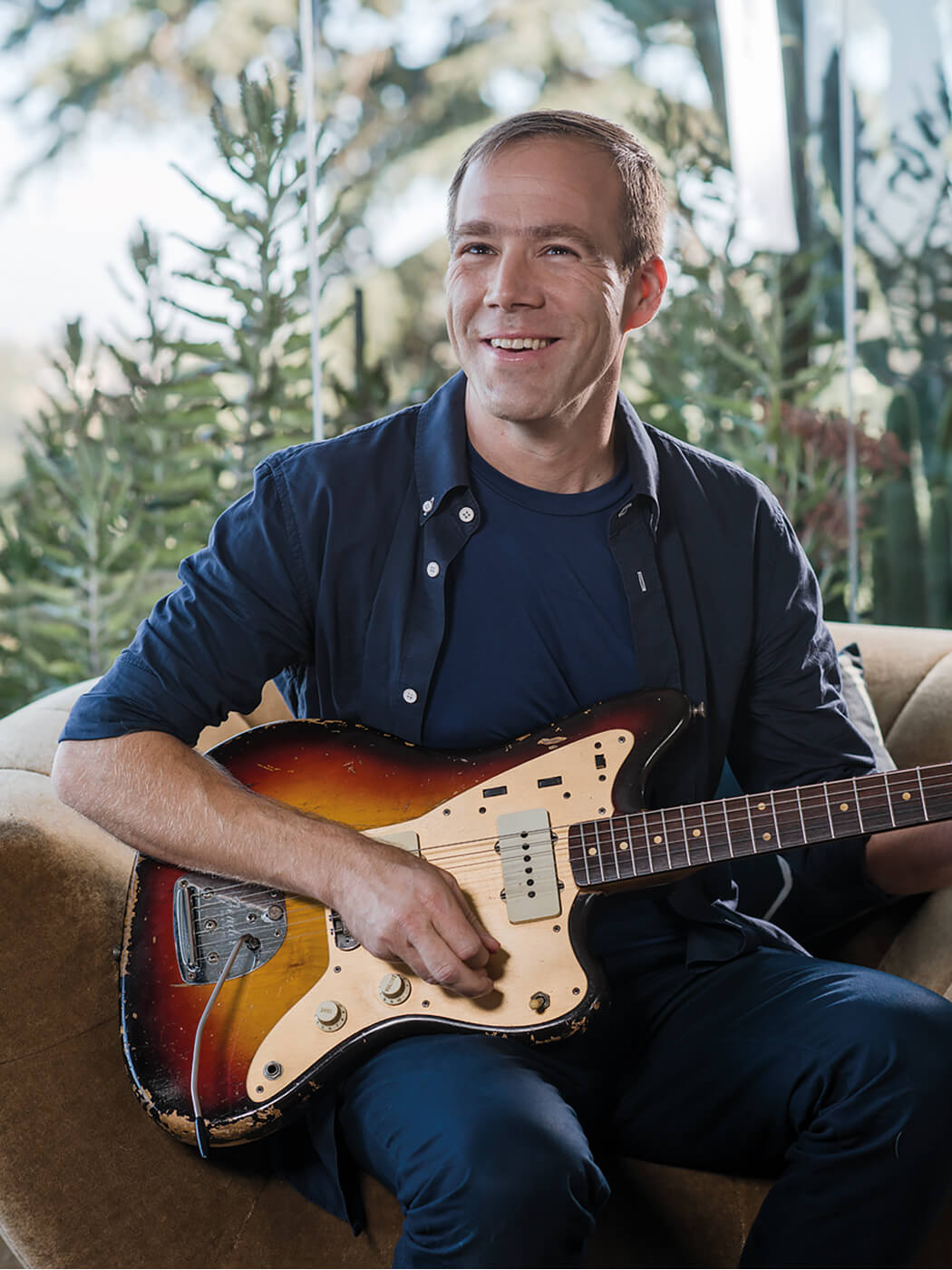
Going underground
This combination of angular and melodic sensibilities would become a common thread running through both Wood’s own music – his band Sammy released two long players and an EP in the mid 90s and even performed on cult British TV show The Word – and the output of the artists he would go on to champion and develop. Another Damascene conversion came courtesy of The Velvet Underground, whom, Luke says, “changed my entire life – my intellectual life, my emotional life, my romantic life”.
“Around the time I was maybe 15, I discovered The Velvet Underground & Nico,” he reveals. “Y’know, I’m of a pre-internet age. It was incredibly hard to get the information. You couldn’t just go and look up the chords online, you couldn’t just go and look up what kind of guitars they played, it was like this treasure trove of information.

“So I would fly to New York City at 16 and just go diving through record stores and diving through the Strand Book Store, trying to find a fanzine on The Velvet Underground. And oh my god, what was The Factory and how did they make this? And who was that? So for me, it was wonderful, the discovery of what they were doing. And there was a sense of minimalism and restraint and also attitude.”
The parallels with the grunge era are inescapable. “I think it was very similar,” Wood agrees. “In the 80s, the American independent movement gave birth to groups like Hüsker Dü and The Replacements and R.E.M., which was kind of mirrored in the UK by The Cure and The Smiths and Echo & The Bunnymen. All of those bands wrote unbelievable arrangements, but maybe with the exception of Johnny Marr, who is interstellar, most of them were generally pretty straightforward guitar players. Nothing’s super-fancy, y’know?
“And those were the bands, adding in the Pixies, that the groups that I was working with in the early 90s were referencing. And then a little bit of Sabbath… but the power of Sabbath.”

Another thing that defined groups such as Sonic Youth, Nirvana and Teenage Fanclub was that they all knew exactly what they didn’t want to sound like: “Everyone really cared about tone. But you wanted to sound different, because what you heard on the radio coming from Whitesnake, Metallica and Aerosmith was a very specific kind of thing.
“And fairly or unfairly, that became considered commercial. And obviously technique and facility was considered a very corporate thing, so just to play a drop-D voicing, with one note, was super-punk.”
Of all the bands with whom Wood worked, it was probably Nirvana who fought hardest to subvert the clichés of the corporate-rock mainstream. “I spent a lot of time with Kurt – especially when they made In Utero,” Luke remembers.

“I was around him quite a bit socially and there was a lot of downtime, so I would be over at his house, playing guitar a lot. We’d both be playing guitar and he was a phenomenally good melodic guitar player, but he was so shy about his facility. The trappings of commerce, of capitalism, of star-fucking, all of that stuff… it was not an act for him, he was deeply allergic to it. He didn’t want anything to do with any of it. To him, all of that polluted the content of the narrative of the story he wanted to tell.”
And for Cobain, this instinctive resistance to orthodoxy went way beyond guitars. “I was once so excited,” laughs Luke. “I got to Hertz at Sea-Tac airport in Seattle and they upgraded me to a Cadillac. I’m like 22, so I’m like, ‘This is dope, I’ve got a Cadillac’. So I drive up to Kurt’s house – we were getting ready to do an interview or go to dinner or something – and he looks at the Cadillac and says, ‘I’m not getting in it.’ I said, ‘What do you mean? This is funny! It’s a Cadillac! How cool is this?’ And he says, ‘Fuck you, I’m not getting in it.’ I had to drive back to Hertz and get a Taurus and go pick him up. He basically was like, ‘I’m not Steven Tyler.’
“But really that’s why I think he gravitated towards Mustangs and Jags and Mosrites – he was really contrarian to whatever was that super-technical guitar. Ironically, if you listen to Nevermind, the tone on that is fucking amazing.
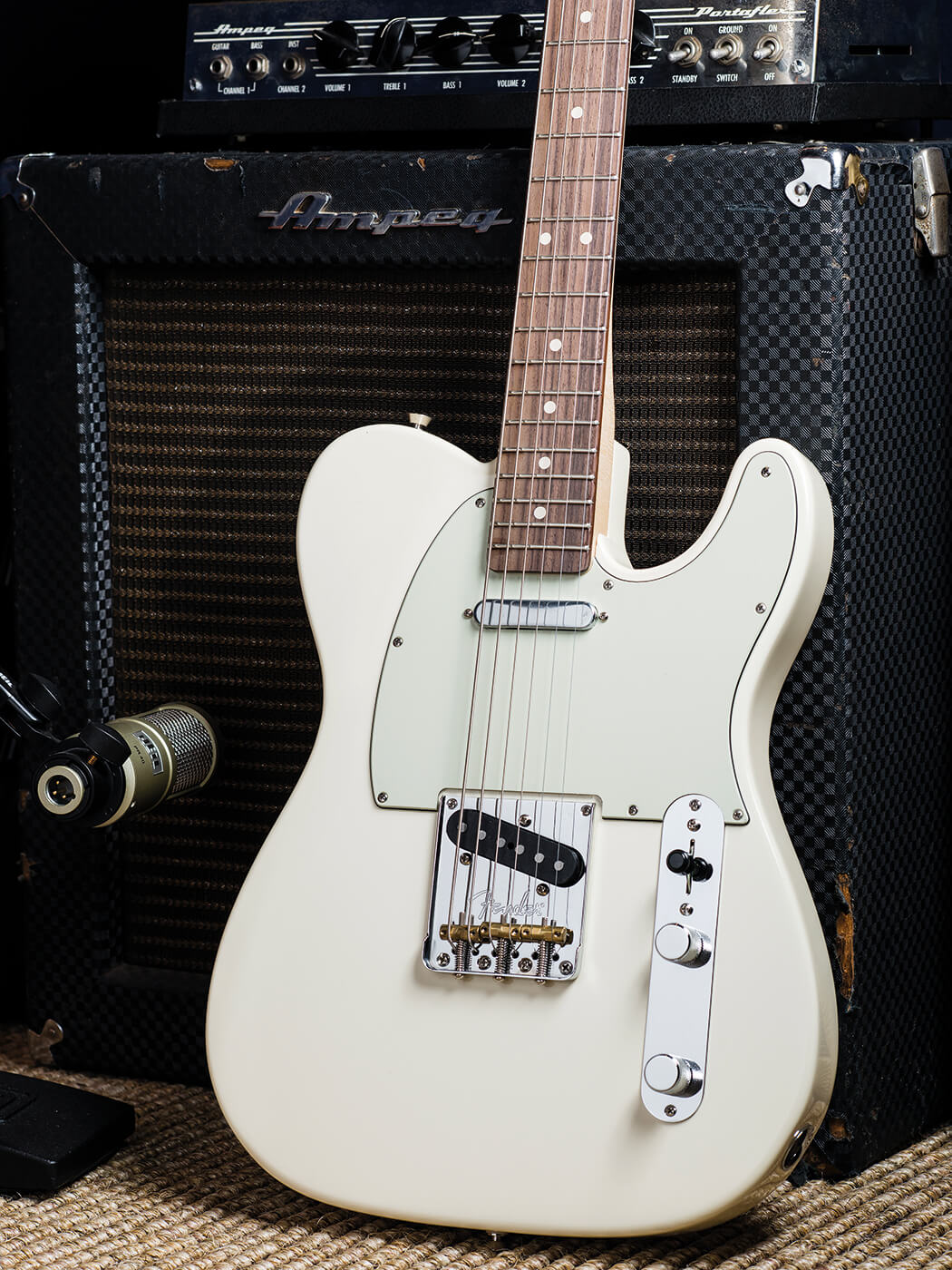
“Historically, a lot of artists destroyed their instruments but, you know, they get a Squier for that last song. Kurt wasn’t built like that. He would take his favourite Jaguar and it would just go right through the cone and everyone had to deal with it later! And the next day, it would be like, ‘We’ve got a show, what are we gonna do? We need a guitar!’ It was really deeply chaotic, and often, especially on the percussion side, Kurt would destroy something of Dave’s and Dave would be like, ‘That’s my drum set… what are you doing?’”
Secret shredders
Two other guitarists Wood spent time around in the 1990s were Billy Corgan from The Smashing Pumpkins and Rivers Cuomo of Weezer. The Beats mainman rates Corgan as the player from that era whose playing has best stood the test of time: “I was just obsessed with how he got those sounds on Siamese Dream. And the deeper I would go into it, the more calculated and meticulous – you realise this was really a complete thought for him.
“None of those tones were a mistake, it was super-calculated, he had amazing facility and I think the closest I’ve ever seen to anyone having complete muscle memory. And that’s why those doubles are so tight.”
Cuomo, too, is singled out for high praise: “I worked with Weezer when The Blue Album came out – and I remember meeting Rivers for the first time and having no real understanding of his back story and going into a rehearsal but then watching him just shred… he was as technical a player as I’ve ever worked with, in any genre. He could play almost anything, but the restraint he had – and Billy had that same thing – they would give you a riff or a hammer-on, or something that had such technical virtuosity that you would know was in ’em, but they would give it to you as like a passing note.”

Like the punk movement that paved the way for it, 1990s alternative rock was a reaction against the mainstream – but it still came with its own rulebook and dogma. Because the prevailing wind of the time was so anti-virtuosic, we wonder if players such as Corgan and Cuomo had no choice but to underplay their technical ability.
“Yeah, I think so,” confirms Luke. “In truth, having come deeply from that scene – the American punk scene and the American indie-rock scene – those bands would not have been accepted. A good example – I think Stephen Malkmus from Pavement is a tremendous guitar player. He has really good tone and great melodic facility. I don’t think most people in the world would ever say that about him, because he hid it so well!
“90 per cent of what he did was just a throwaway because he wanted it to feel that way, he was so steeped in irony. The song Fin ends with this super-long solo, it’s a gloriously beautiful melodic solo and the tone, the vibrato and the way he just plays it… it’s like Layla, to me. It’s so emotional.
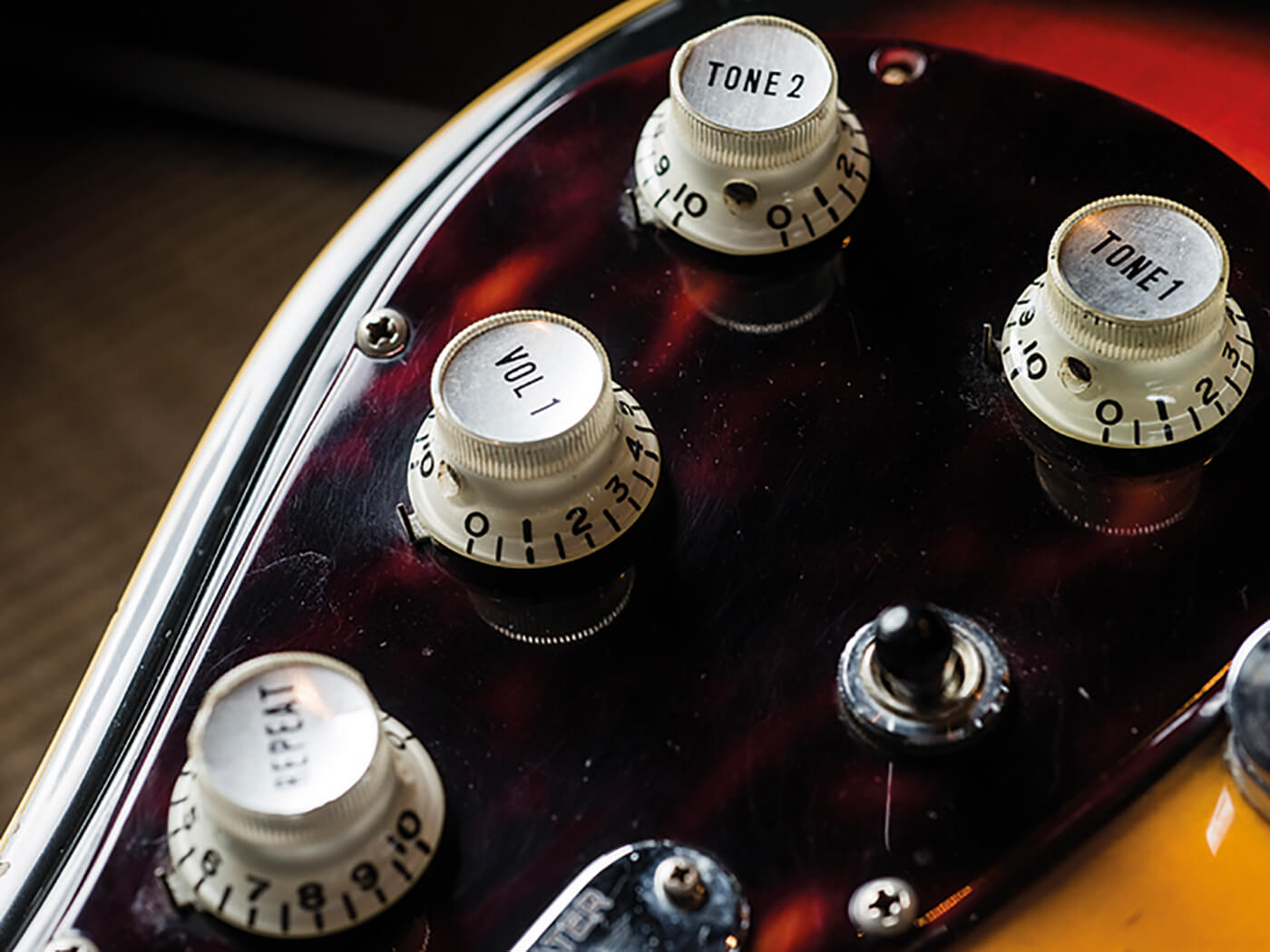
“I think all of them were playing with artifice and irony and it was a really direct conversation with the commercialisation of rock ’n’ roll. The whole point of rock ’n’ roll was about antithesis. And then once it became commodified and once it became big business in the 70s, this whole thing had been appropriated.
“So I think people were really taking it back… and I think that’s what was going on there. I think even though a lot of them had grown up maybe playing these incredible guitar solos, they wanted to hide it a little bit, which I understand. I almost thought it was like a super-power.
“Billy is different, because Billy has a more outward ego. The way he stands onstage, you could tell – ‘I’m a guitar hero’. He’s gonna say to you, you try to play this at home… watch! Whereas Rivers will never really go there, but he can play almost anything. He just had incredible restraint and would somehow go back to these garage chords. But he would do it in rehearsal – I remember him once literally playing Eruption. The whole thing. I was like, ‘How do you know that?’. I was used to working with Thurston and Lee from Sonic Youth, who were great guitar players, but they came from contemporary music, working with people like Rhys Chatham and very contemporary, academic music. The last thing they were gonna learn was Eruption!”
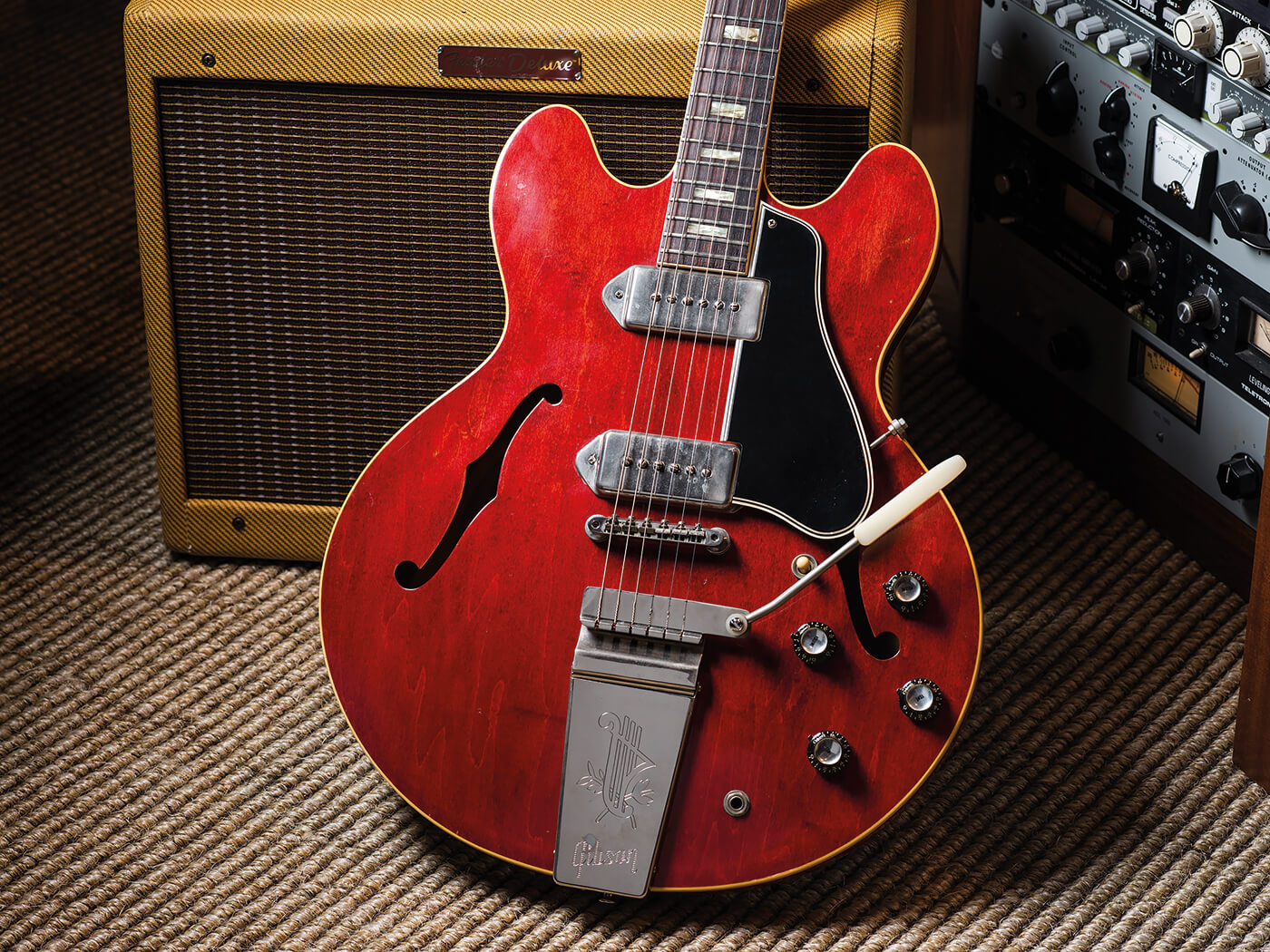
School’s in session
The same could be said for Luke himself, whose guitar-playing tastes veer somewhat to the left of Van Halen. “I was always very resistant to any kind of formal pedagogy,” he admits, “because I was a little bit kind of punk rock, so I just felt like I didn’t want that. And also I was very focused on writing songs. As a player, I was pretty true to artists like Jonathan Richman, Robert Quine, Tom Verlaine, Robert Lloyd. I’m not nearly as good as any of those players, but that’s what I wanted to be.
“Quine is a great example. Just an incredibly angular, melodically beautiful, aggressive, smart guitar player. What I love about his playing and generally find interesting is – very similar to Sterling Morrison and Lou Reed in the Velvets – you get a little bit weird for a minute, then you get super-beautiful and melodic. I think it was always that contrast of the two things, where you are not sure what the guitarist is doing for a minute, then it hooks you.
“Then the other thing for me was just being really obsessed with the guitar as a counterpoint melodic instrument, so it almost becomes percussive. And that comes from me really loving Brian Eno, loving the Talking Heads and probably comes from funk music and R&B. And then growing up through punk, I became a huge fan of the palm mute.”
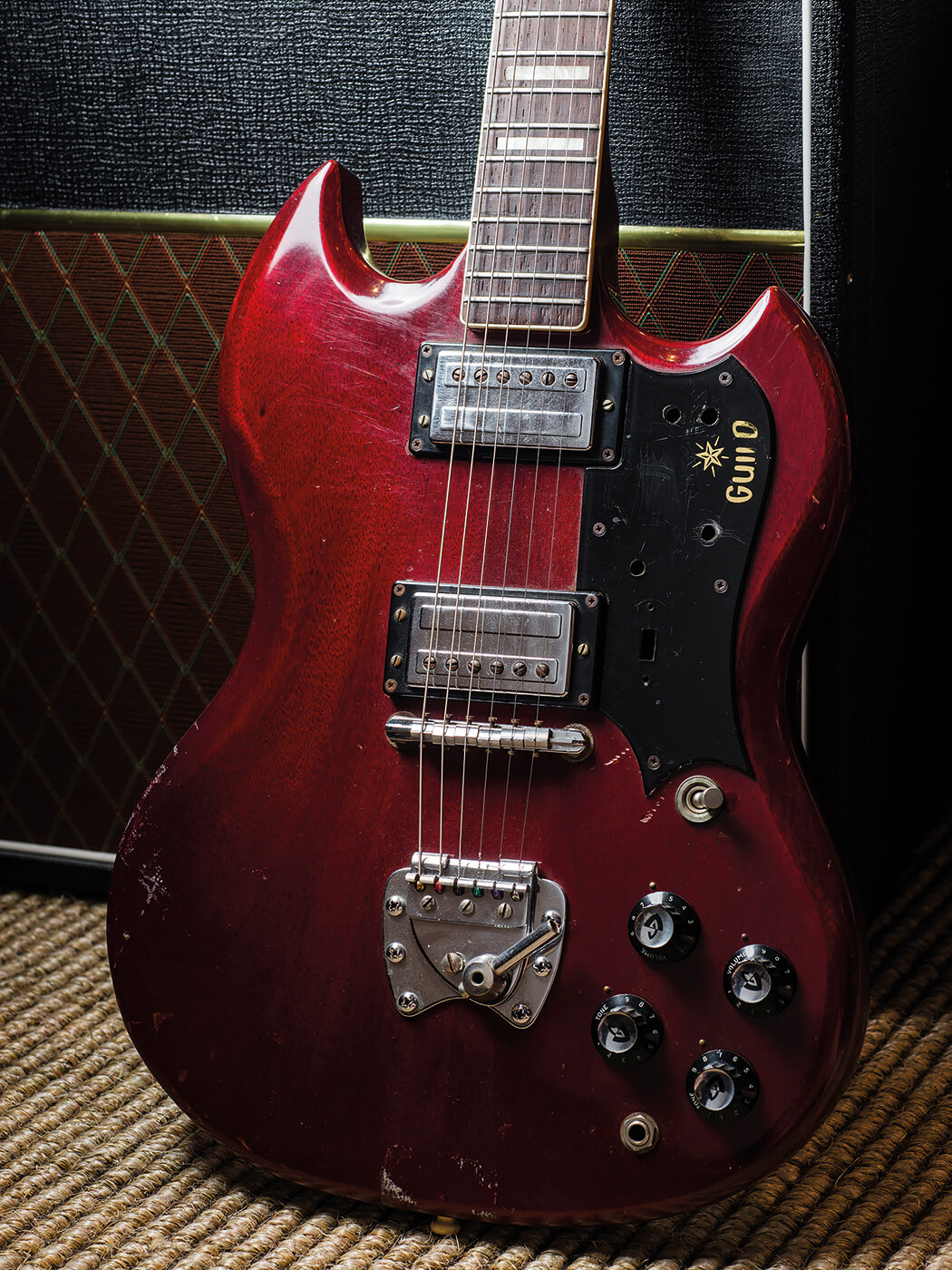
Wood may have not had any formal guitar tuition, but in many ways his time in recording studios as A&R and a label executive provided the best musical education it’s possible to have, along with the chance to be involved in the creative process. Inevitably, there were politics to navigate: “Because I was an A&R person – I wasn’t the producer, I wasn’t the songwriter, I wasn’t in the band, generally, even though I had a band – I realised very early on that one of the only ways to build a successful dialogue with the artist was never to ask for publishing.
�“I always made it very clear up front, if I have an idea – if I say go to the VI minor instead of the IV chord there – I’m not gonna come back a month later and say, give me 10 per cent of the song. Take my ideas, throw ’em away, don’t take them, whatever – I will never ask you for publishing, this is your music. My job as the record company is to try and make creative ideas that can potentially make it better, and it’s for you to take them or throw them away, that’s your job.
“But then the only way to have a rapport was to spend the time trying to be as quiet as possible on the couch and just listening and being in the room. Especially with producers. If you come in there and immediately you are like, ‘The hi-hat sounds like it’s out of phase with the tom mic’, y’know they’re gonna say, ‘Get the fuck out of the room! We’re immediately going to Reykjavík and we’re making the record there!’
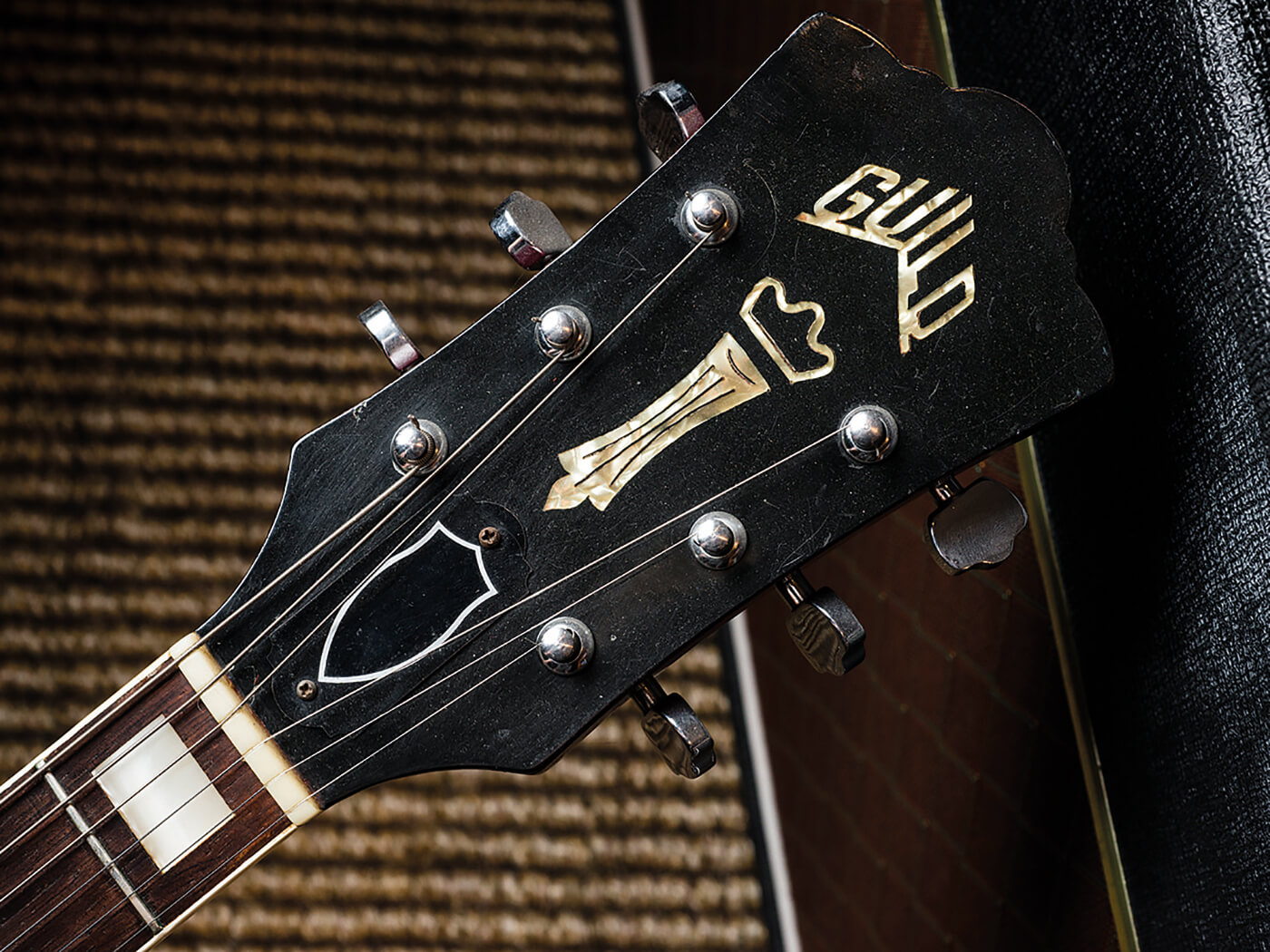
“But if you actually have the patience to sit on the couch, and at some point, six or seven hours into the third day you’re still hanging out and they turn around and say, ‘I can’t decide, does the Deluxe sound better than the Bassman?’, they are gonna turn to you and say, ‘What do you think?’ And you are gonna say, ‘I think the Bassman has a little more tone on the bottom end,’ and if you’re right, they’ll say, ‘That’s what I was thinking.’ And then two minutes later, they say, ‘What do you think of the 57 and the 421 on it?’ ‘I think the 421 sounds better.’ ‘Yeah, me too!’ So you slowly build the dialogue and through doing that, you learn a lot and you’re trusted. So that really developed my playing, watching all these other players and producers make records…”
And it has to be said, they weren’t just any old records. “No, no, and it was at a time when there was a tremendous amount of capital to make these records. Back then, we would be in the studio with an arsenal, a king’s riches of amps. Every vintage AC30, Plexi, Deluxe, Twin. You bring in the coffins of guitars. What do you want? Bring them all. 30 guitars.
“So you got to sit there, listening to everything. And you quickly realise, oh… I see what the Les Paul Junior P-90 does through that amp versus a regular Les Paul, or I see why the Tele works better there.”
Hands on desk
As Luke’s career developed, he found himself engineering sessions and even sat in the producer’s chair, sometimes out of necessity. “I was a highly involved, creative A&R executive. I would produce when I had to, I would engineer a lot to finish the records up because we’d run out of budget – so it would be like, okay, we’re done but we’re basically out of budget and we still haven’t finished overdubbing the guitars. But I worked with super-talented artists and always felt like there should be a better producer in the world than me.”
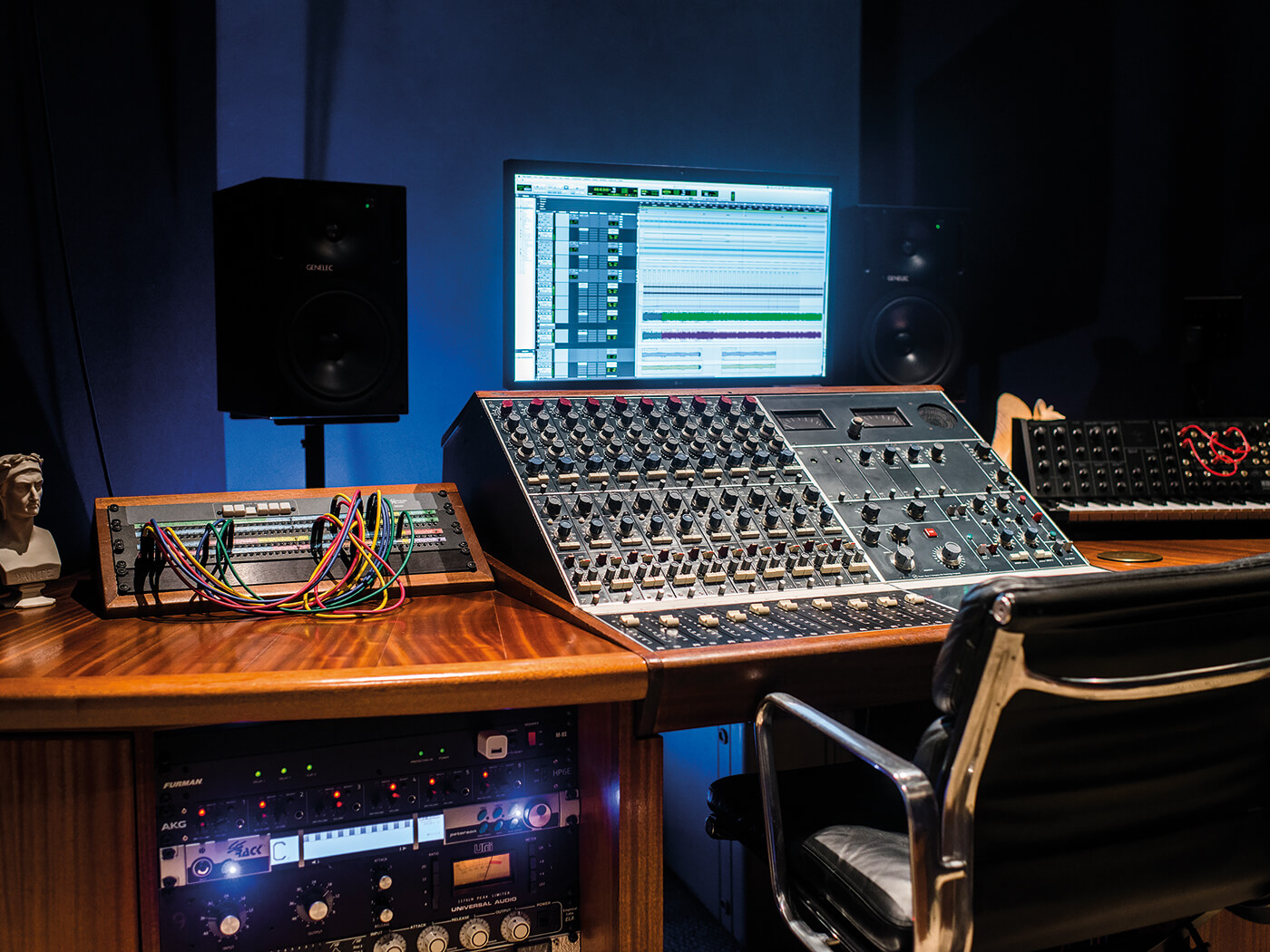
While manning the mixing board, the biggest lesson Wood learned creatively was that it all starts and ends with the human link in the signal chain. “I was in Burbank in about ’96-’97 working with an artist,” he remembers, “and I pulled in piles of gear, we had a big recording budget. I think I was co-producing the session, and after about six or seven hours with the guitar, we just couldn’t get there.
“So it was one of those things where you’re endlessly like, try the other pickup, try the rear pickup, try the middle pickup, change the ground, okay, put the presence up, put the presence down, phase-invert the mics, let’s try the 57, let’s try the 421, let’s try the Coles.
“You are sitting there for hours and it’s not quite sitting in the track. And I remember at one point we were sitting there and getting frustrated and talking about going back to the menu book to order more food! I was like, ‘Alright, let’s try it again, plug in the Telecaster instead of the Strat, tune up, okay, go, go, play!’ And all of a sudden the sound was coming back through and it was like fucking magic! It was just heaven!
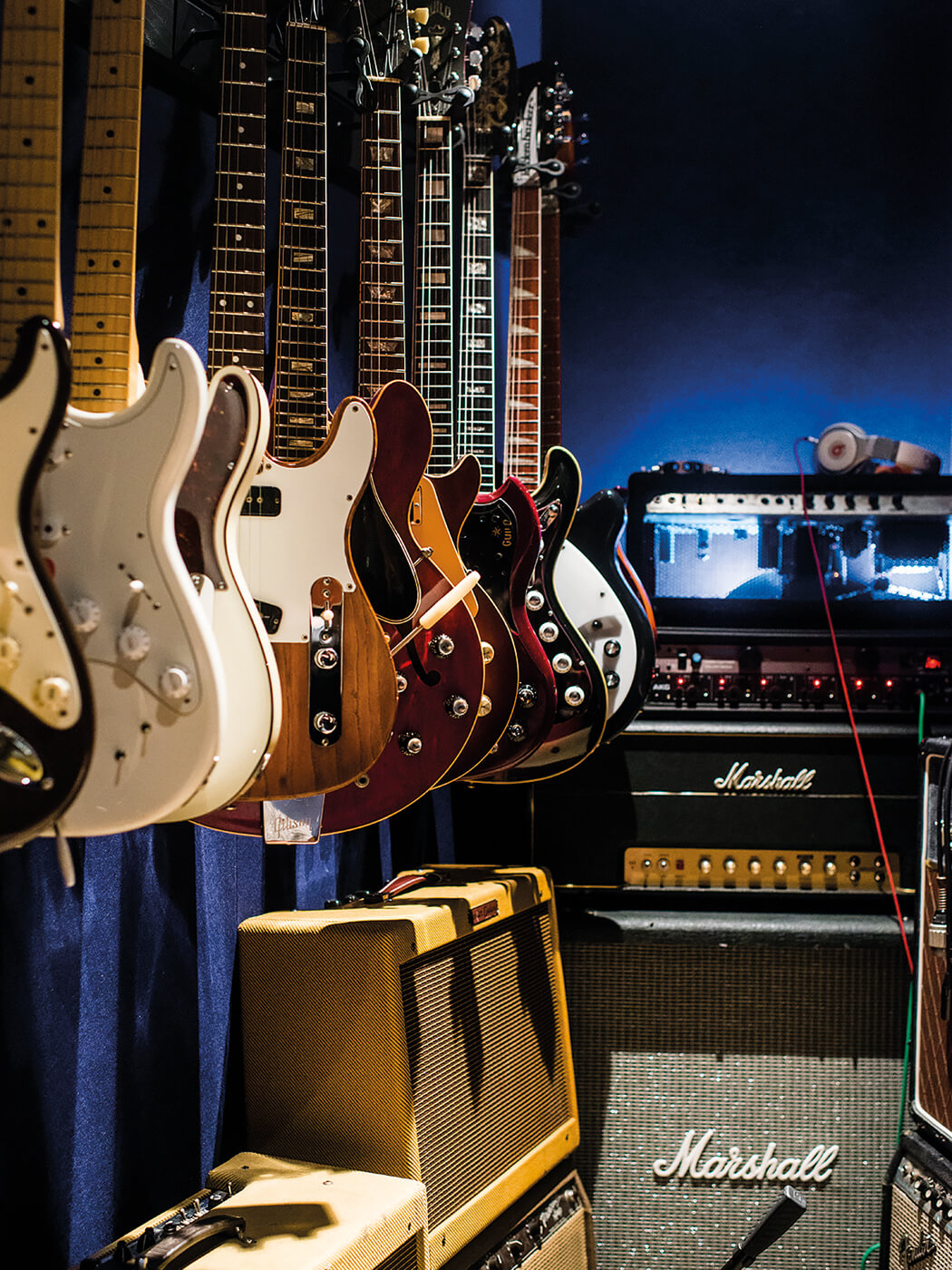
“It was a rhythm part and I’m just like, ‘That’s it! Don’t do anything! What did you change?’ And it was the other guitar player playing the part! I was like… ‘Oh! The musician!’ And that was the most important lesson I ever learned in making music. It really is about the emotion of the player.
“And honestly, sometimes it has nothing to do with their technical capacity. It just has to do with their ability to emotionally connect with the storytelling of the song. So it really starts with the player. I could spend all day long saying coated head, uncoated head, flatwound, round-wound, you know what I mean? Which tube do I want? If you have all the resources in the world but it’s not in his or her hands, you’re not gonna get it.”
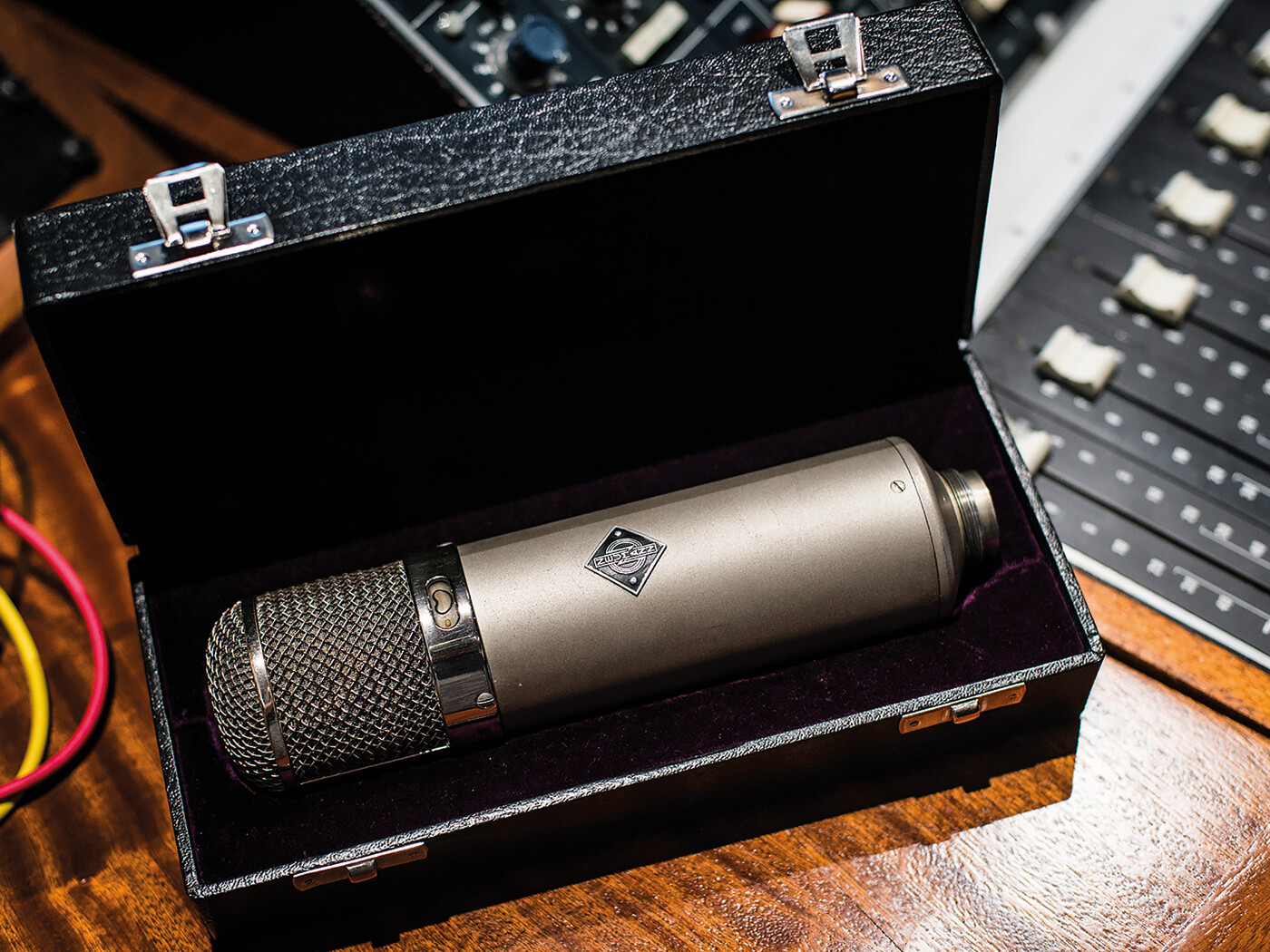
Between the bars
Of all the amazing experiences he’s had in the music industry, Luke cites working with Elliott Smith as the most precious. “Nothing can come close to comparing with that experience. I first reached out to him when I heard his first seven-inch. He wasn’t interested in a record deal at the time, he was in this group called Heatmiser, but he was super-polite and he was genuinely humbled that someone from a major label would call him. He pressed like 500 of a seven-inch and he was like, ‘I can’t believe a major label is calling me about my stupid seven-inch, that’s just ridiculous!’
“But three years later, his career progressed and we reached out to him again and signed him to DreamWorks, and made XO and made Figure 8. And about two thirds of the demos for Figure 8 he did at my old house in Silver Lake. So he would be recording all day by himself and I would come home at night and sit with him and hear them.
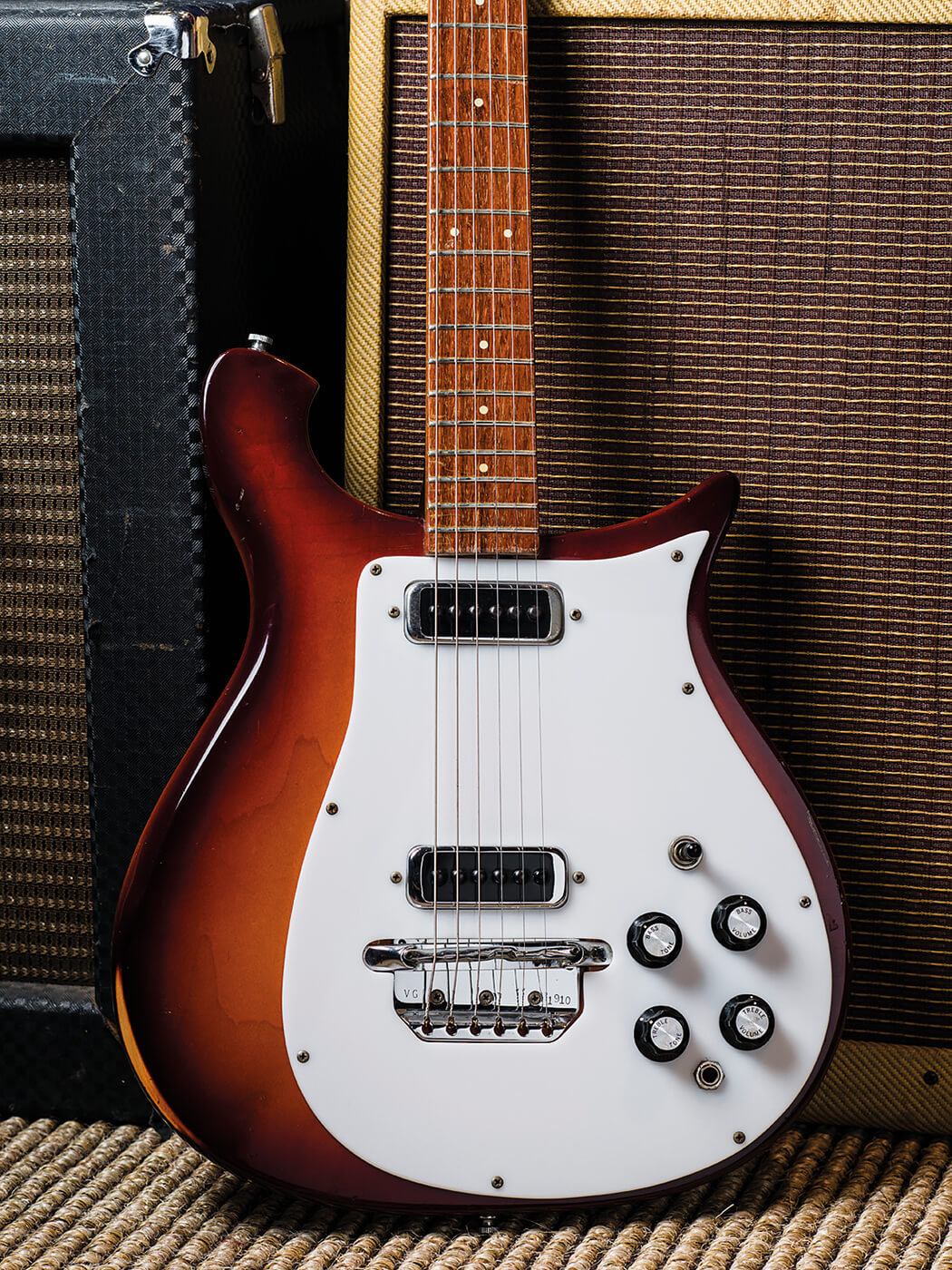
“I went back the first day Elliott did it and he was working on Junk Bond Trader. I had at the time a Mackie board, and he basically had the whole demo tracked on ADAT, but he was working on the final guitar part. He had the Jazzmaster and he was going through my ’62 Princeton, and it was, y’know, far back, bridge pickup, super-bright! And I’m just like, ‘Oh, this is a disaster! This guy has no idea how to engineer!’
“He’d worked with Tom Rothrock and Rob Schnapf, so I knew him in the big recording studio when he made XO, I didn’t know him as a guy just doing all the engineering. He played drums on there – everything was on there; drums, bass, Mellotron, the whole thing, right? And I’m hearing this part and I’m sitting there and he says, ‘Let me just finish tracking this.’ And I’m going, this is going to be a disaster… a disaster! And then he unmutes the other parts and he plays it back and he’d perfectly EQ’d it to track. I was like, I’ve never heard anyone do that in my life. To have the ability to pre-EQ the entire record!
“He could sit at the piano and play Rachmaninoff, he could sit and play deep Delta blues, he could play real Appalachian riffs, he could play any kind of Woody Guthrie folk music, he could play all kinds of 70s proto-metal, he knew prog-rock, he could play you a Rush solo, Elliott knew Yes! He knew all this music. But I didn’t know he had that ear, y’know, and I think that really taught me a lot.”
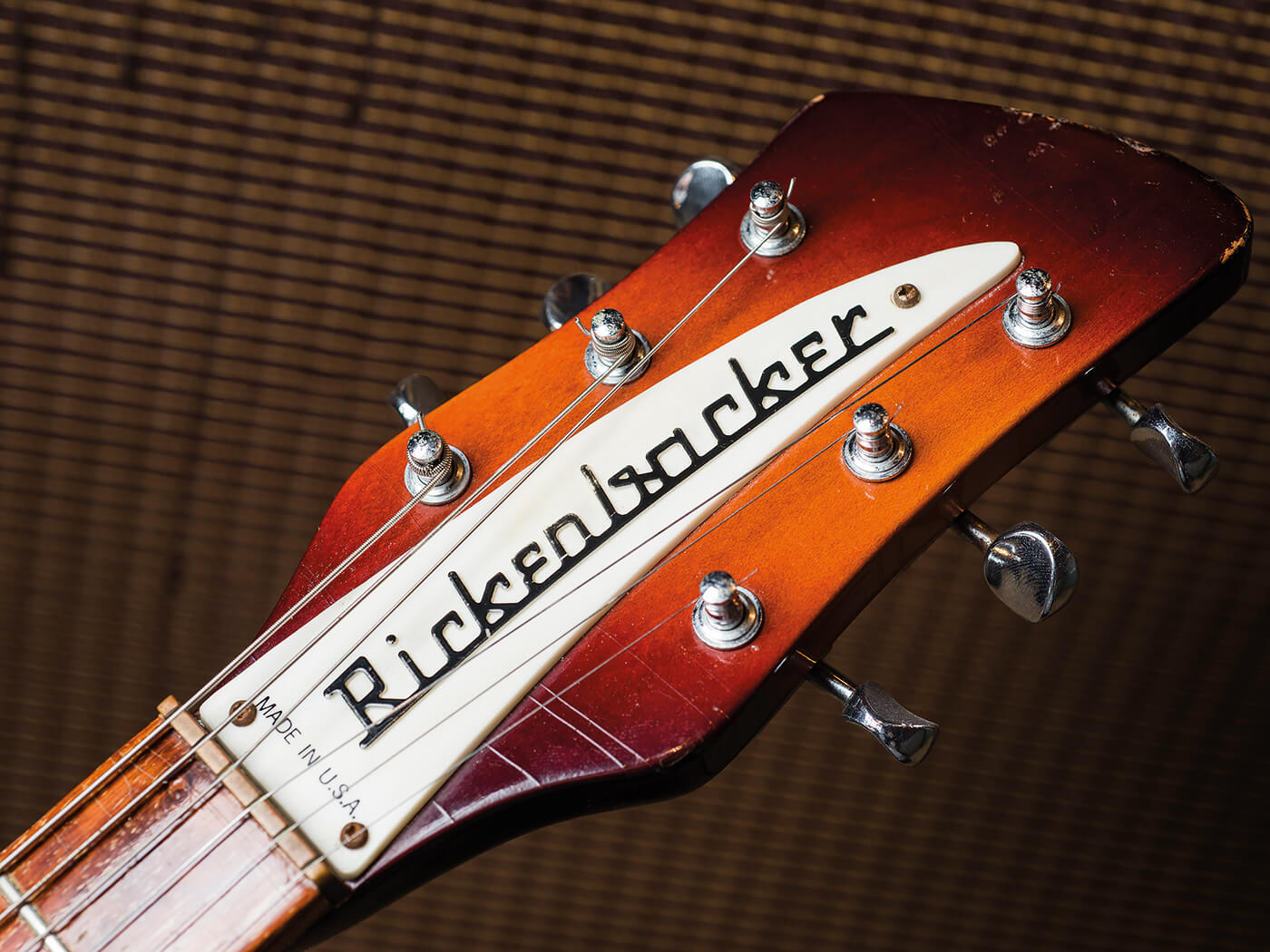
Smith seems to have been one of those rare, almost supernatural talents who had the whole arrangement for a song fleshed out in his head before hitting record. “I can only imagine it must have been the same with Brian Wilson,” says Luke, “where you just have one person that has the whole picture. But to have that ability to pre-EQ, to know, okay, my voice is going to sit here, so if I just notch everything below like 3kHz, and put the guitar here… obviously, George Martin and The Beatles were doing that a lot because they were tracking to two-track or four-track at times, but Elliott had that gift.
“And he also had that gift of being sweet and beautiful and also being punk and being oppositional and aggressive and doing them all on an acoustic guitar. He could do a pass of something that would be the punkest thing I’ve ever heard, on an acoustic, then he’d do a pass and try it, just to lighten up and it would sound like late-60s, early 70s Laurel Canyon – beautiful folk music. He knew exactly what he was doing.”
Back to the future
Luke’s role as president of Beats places him at the epicentre of contemporary music consumption, so we wonder how he feels about the guitar’s shifting role in popular culture. “I think that music is obviously more important than ever before because of its availability,” he asserts. “It’s everywhere. And I think that people have a much more diverse palate – especially than when I was younger. We were extremely stratified in terms of genre, and it was tied into your identity of who you were in the world. Are you a mod or a rocker? Are you punk, new wave or are you metal? It doesn’t really exist any more. It’s all one thing.
“What I find with a lot of contemporary pop songwriters in all genres, these songwriters are writing hooks for hip-hop, pop music, even EDM – they are writing on guitar. Because they write a different kind of song than they do just sitting down at the controller, which they’ve been doing for 10 years. They don’t want to sit down at the controller again, because you naturally go to the same places. Whereas the guitar has certain limitations and it frustrates you, in a good way. And I think the guitar is becoming more of a controller itself. Effects are so beautiful right now – people are realising, okay, the guitar is my controller, my pedalboard is my sound.
“And that’s very different than when I grew up, which was basically the amp and the guitar was the sound. I think it’s good – it’s driving a lot of improvisation and a lot of improbability and a lot of weird things. The more weird stuff you introduce, you respond to that and it pushes you somewhere else.
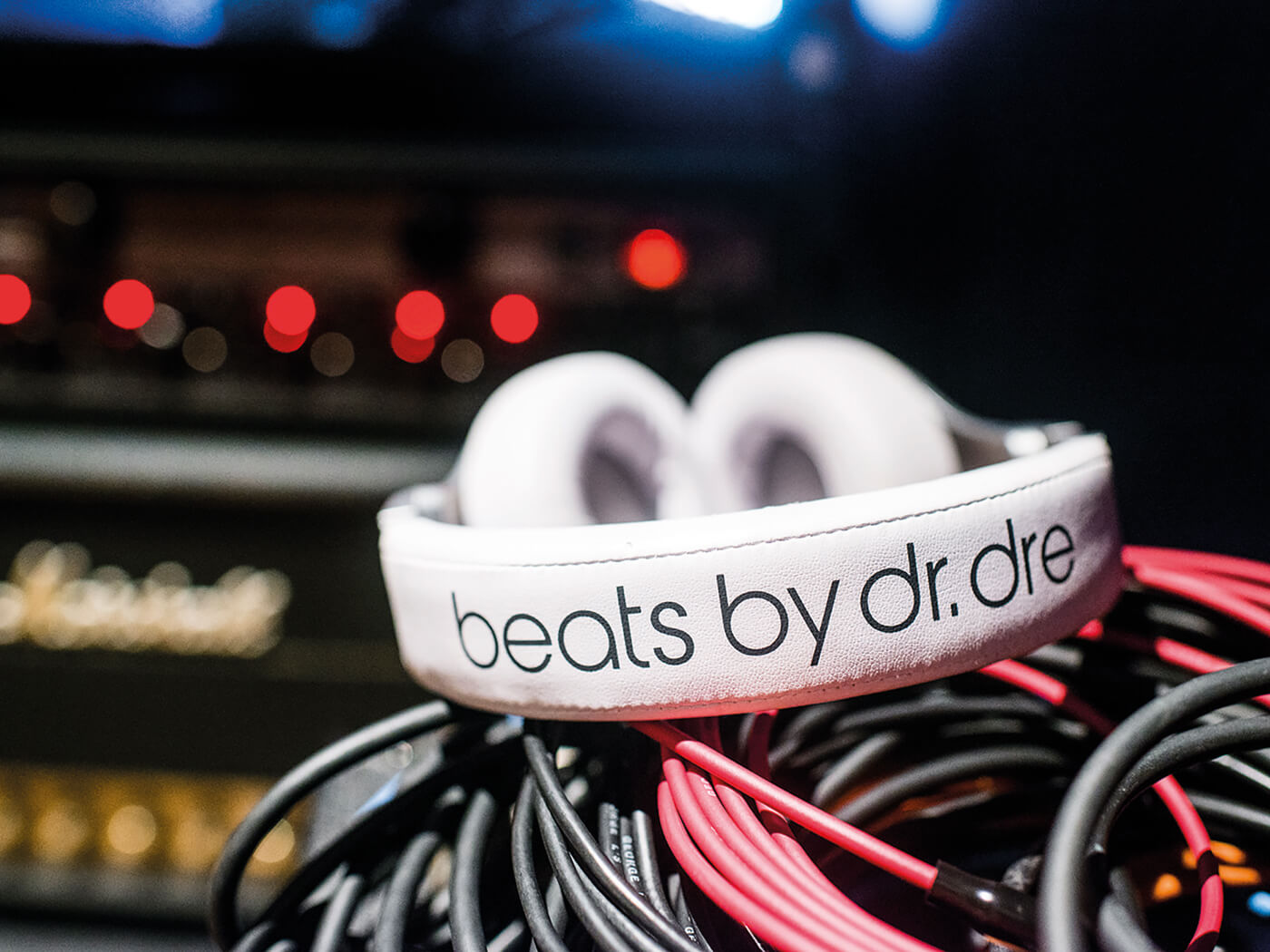
“With the deep innovation in the world of effects, algorithms are getting better and they’re doing weirder things and especially more and more effects that are now tempo-aligned. It allows you to create sounds that we never had before and then you react to that. For myself and other people I work with, I loop a lot of things, cut a lot of things up, use found sounds, re-amp things.
“One great trick that I get people to do all the time is, get a sound of something, play it back through your speakers, pull out your iPhone, voice record it and then send it back into the computer. And suddenly, it feels completely different. Because then it’s going to strike you emotionally, and then if you cut it up into literally almost an eight-note loop, then it becomes a percussive element. It’s forcing people to go farther.
“After writing 20 songs for an album on electric guitar, lock it up in your car and write 10 more on an acoustic guitar. And now go to your mom’s house for the weekend and write 10 songs on her shitty piano. ‘But I don’t play piano!’ Doesn’t matter. The way the voicings, the sounds, the percussiveness, the way it feeds back to you emotionally, you write very different music.
“Rock ’n’ roll was supposed to be oppositional. Rock ’n’ roll was invented as a response to your parents’ music. It was a response to this very mundane, super-safe music that was relatively inauthentic in terms of human experience. If you think about those Brill Building show tunes, they are beautifully written, but love was never that simple. At least not in my life! Love was always a messy, complicated, sometimes beautiful, sometimes dirty thing.
“Rock ’n’ roll came along and was an expression of post-World War II youth culture, saying, we’re going to take our own culture, we’re not just going to listen to Perry Como, we’re not gonna listen to show tunes. We’re going to write about sex and being angry and being upset and driving for change. Whether it was Dylan or Chuck Berry. That was the nature of rock music, so we have to continue to push it forward.” Amen to that.
Stay tuned for an even closer look at Luke Wood’s guitar collection.
